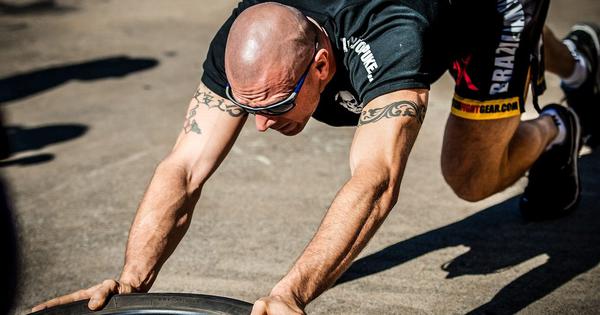Whether you’re riding a bike, playing the piano, or hitting a hole-in-one, there are a few ways you’ll never forget. And the cause of this phenomenon is thanks to something called “”.muscle memory”.
Muscle memory applies to a wide range of physical activities, from playing musical instruments to sports. However, the term does not actually refer to the muscle’s ability to memorize movements, although the movements must be practiced repeatedly in order to develop muscle memory. Rather, this “memory” occurs in our central nervous system. This explains why many of us are able to retain the skills we learned in childhood, even if we haven’t used them in years.
But muscle memory doesn’t just apply to skills and body movements. It turns out that muscle memory helps in the gym. It’s especially helpful if you’re trying to get back in shape after a vacation.
Types of muscle memory
There are two types of muscle memory.
The first type refers to the ability to perform physical tasks automatically and easily. The more you practice a movement, the less you think about it and the more automatically you can perform it. For this reason, athletes practice movements and specific shots repeatedly so that they can perform them quickly and accurately under the pressure of the game.
At a basic level, this type of muscle memory involves developing neural pathways that help the brain communicate with muscles more effectively. This happens through a process called myelinationthe myelin sheath (the insulating layer that surrounds nerve fibers) thickens, making it more efficient at transmitting electrical signals in both the body and the brain.
Studies show that myelination is strengthened with repeated practice physical work. Even relatively short periods of practice can make big changes in the brain and body that support the development of muscle memory.
However, it’s important to note that not all repetitions lead to muscle memory.it only happens when you work deliberate practice – means performing a particular movement or activity with focused attention and effort.
back to fitness
The second type of muscle memory applies to your ability to stay in shape.
Let’s say you’ve never lifted heavy weights in the gym until recently. You probably remember how awkward and difficult these exercises felt when you first started, and how much incremental effort it took before you could lift heavier weights.
Now let’s say you take a break from working out and come back many months later. You may have noticed that even though you were resting, it was very easy to get back to the weight you were lifting before.
This is due to muscle memory. This applies to any exercise you perform and makes it easier. regain lost muscle mass Compared to when I first put on muscle.
The mechanisms behind this kind of muscle memory are not fully understood. However, our current theory is that muscle cells remain even as muscles shrink.
To build muscle, you need to put stress on it, for example, when you do an exercise such as weightlifting. This stress triggers the growth of muscle cells and helps us become stronger.
For a long time, it was believed that these new cells would die if the muscles were not used. However, according to research, this may not be the case. 2016 survey results The myonucleus (the part of the muscle cell that contains the genetic information and also serves as a key indicator of muscle growth) actually shrinks only when we are inactive and does not disappear at all.in the meantime Needs more research To fully understand this process, this at least suggests that our bodies use muscle nuclei to store fitness capacity. This explains why the second fitness round is faster.
But if you’re wondering how long it will take you to get back in shape after a break in training, the answer, unfortunately, is not so simple and varies from person to person.
The speed at which your muscles recover also depends on your level of inactivity during the break in training. for example, It takes time to return to its original shape It compares being bedridden for months with simply stopping strength training and continuing with your normal daily activities.
In the latter case, A study of women Participants were able to regain pre-rest strength and size after 6 months or more of rest with 6 weeks of retraining compared to strength training which took 20 weeks to initially get fit. was shown. another study Men and women who trained for 10 weeks and then rested for 20 weeks were found to be slightly stronger and slightly more muscular after 5 weeks of retraining than after the first 10 weeks of training.
There’s still a lot we don’t know about muscle memory, but the good news is that it’s never too late to get back to the gym, even if it’s been a long time. It may feel like starting from scratch at first, but the profits will pay off quickly. But while you may be tempted to get back to what you were doing before you went on vacation, it’s important to listen to your body and gradually return to the gym to avoid injury.
Jack mcnamara,Teacher Clinical Exercise Physiology, University of East London
This article was originally published conversation.
